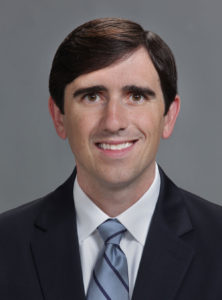PLC Knee Injury Specialist

Are you an athlete who participates in contact sports? If so, you may be at risk of sustaining a posterolateral complex knee injury, also called a PLC injury. A PLC injury is an injury to the outside of the knee and is commonly seen in conjunction with other ligament tears of the knee (PCL, ACL). This type of ligament injury most commonly occurs after a high energy impact to the knee. PLC tear specialist, Dr. Robert Boykin provides diagnosis and both surgical and nonsurgical treatment options for patients in Asheville who have sustained a PLC tear. Contact Dr. Boykin’s team today!
The Posterolateral Complex (PLC) refers to a group of ligaments and tendons that run on the outside of the knee. The PLC is composed of the fibular collateral ligament (FCL), the popliteofibular ligament (PFL), and the tendon of the popliteus muscle. Together these three structures provide stability to the knee with side to side motion and during rotational movements. While in some cases the FCL may be torn in isolation, in other situations the entire PLC may be torn leaving the knee highly unstable.
An injury to the PLC is commonly seen in conjunction with other ligament tears of the knee (PCL, ACL) and is most common after a high energy injury to the knee. This may be seen after a trauma such as an auto accident or sporting injuries in skiing, football, soccer, hockey, etc. Knee surgeon, Dr. Boykin specializes in the treatment of PLC injuries for patients in Asheville, Arden, Fletcher and surrounding communities.
Symptoms of a PLC Tear
Symptoms which are common with a PLC tear may also be seen with other knee injuries, which is why it is important to seek medical attention if you note any of these symptoms:
- Pain along the lateral (outside) aspect of the knee
- Instability of the knee (feeling that the knee is shifting)
- Swelling
- Catching, popping, or locking sensation felt within the knee during movement
- Increased rotation of the knee
- Numbness or coolness in the foot*
* These symptoms can indicate a neurovascular injury and medical attention should be sought immediately
How to Diagnose a PLC Injury
Dr. Boykin will conduct a thorough history and examination of the knee checking for pain, mobility, instability, and strength. He will assess all ligaments of the knee on exam to determine the extent of injury. X-rays will be taken to look for any injury to the bone and in certain cases specialized stress X-rays be performed on both knees to compare stability. A MRI scan is usually ordered to better visualize the damage to each of the components of the PLC and also to assess the status of the meniscus and articular cartilage of the knee.
Treatment Options for a PLC Knee Injury
In certain cases where the PLC suffers a “sprain” or a minor tear the injury may be able to be treated with non-operative measures. These include rest, icing, appropriate bracing, physical therapy, and strengthening of the muscles around the knee. If there is a complete tear of the PLC with resultant instability on exam and X-rays, for patients who have failed non-operative treatment, and in cases of multiligament injury that include the PLC, a surgery will be recommended.
When to Have Surgery for PLC Knee Injury
For severe injuries to the PLC, Dr. Boykin will perform an open reconstruction procedure to rebuild or repair each component of the PLC. Dr. Boykin strongly feels that is important to address each of the three parts of the PLC if they are injured and to reconstruct them back to their original anatomy. During this complex procedure donated grafts will be used to perform the reconstruction. Any other procedures that need to be performed (including repair of the meniscus or reconstruction of other ligaments) are typically performed at the same surgery when possible. In cases where a patient has had insufficiency of the PLC for many years or has failed another PLC surgery because of a malalignment problem of the leg, Dr. Boykin will perform a staged procedure to correct the alignment of the leg followed by a ligament reconstruction.
For additional information regarding PLC knee injuries and management contact Dr. Robert Boykin who treats patients in Asheville, Arden, Fletcher and surrounding North Carolina communities.
